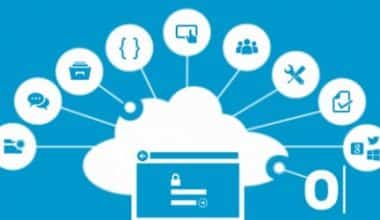As a result of their convenience and security, mobile device is now commonly used in the workplace. Smartphones, tablets, and laptops have become indispensable to modern business and modern labor. Also, mobile devices are now an important part of most businesses because they are needed to do work from home. Work-issued mobile devices with sensitive data could be a security concern if lost, stolen, or hacked. Hence, IT and cyber security managers now have the responsibility of provisioning, managing, and securing mobile device (MDM) within their various corporate environments as the necessity of controlling mobile devices has grown. With advanced MDM software, IT and security can manage all company devices, no matter what kind they are or what OS they run. Good MDM software keeps devices safe and the workforce busy. This piece will also cover the MDM lock and how companies can use it to safeguard their information.
Moblie Device Management?
The term “mobile device management” MDM refers to any software that allows IT to automate, control, and secure administrative rules on laptops, smartphones, tablets, and any other device linked to an organization’s network.
Using the device, operating system, and application of their choosing has grown more and more commonplace among employees. While installing and linking internal content and resources, IT departments have a distinct set of difficulties due to the variety of mobile devices.
MDM often uses a set of tools, such as corporate policies and certificates, mobile device configurations, apps, server software, and hardware, to manage the devices of its users. The goal of MDM is to maximize device support, corporate usefulness, and security while facilitating greater user freedoms like BYOD.
IT administrators can more easily monitor and control access and make sure that security policies are followed across all of a company’s divisions, departments, and branches if the company is split into separate parts. To save costs, improve operational effectiveness, and prevent risks like data and security breaches, organizations need a solid MDM architecture.
As the prevalence and complexity of mobile device users have grown, so too has the focus on managing these devices.
How MDM Works
“Is mobile device management software available?” is a query that pops up frequently on the web. To put it briefly, yes and no. Mobile device management, or MDM, is a strategy that uses software to protect a company’s data and other valuable assets when they are used on mobile devices. Organizations use mobile device management (MDM) to set up procedures, protocols, and security rules for how mobile devices are used. MDM solutions protect the apps, data, and content on a device, as well as control the device’s inventory and provisioning.. MDM and mobile security are similar in this regard. Unlike mobile security and unified endpoint management, which have progressed to a user-centric position, MDM focuses on the device itself.
Furthermore, employees participating in an MDM program have the option of receiving specialized work devices like laptops or smartphones or remotely enrolling their own personal devices. For the highest level of data protection, personal devices get role-based access to company data and email, a secure VPN, GPS tracking, password-protected applications, and other MDM software.
MDM software can then keep an eye on how enrolled devices behave and their business-critical data. And with more advanced MDM solutions, machine learning, and AI can be used to examine them. These programs make sure that computers are protected from viruses and other online dangers. A corporation may send a laptop or smartphone with a data profile, VPN, and all essential software and apps to an employee or consultant. MDM gives the employer the most power in this situation. MDM software let firms track, monitor, debug, and delete device data after loss or intrusion.
What Are the 5 Types of Master Data?
A wide variety of sources, including websites, SaaS platforms, third parties, and Internet of Things (IoT) devices, contribute to a company’s data pool. An enterprise-wide master data management program can yield substantial advantages for every division. Data management is crucial for smooth system integration, and standardization of master data is a must.
The idea of “master data” was developed to eliminate inconsistencies and duplicates in databases. Master data allows firms to centralize their most critical records so that all teams may use the same data.
When many teams lack access to master data, data becomes inconsistent. Whenever time a client downloads a report, for instance, their details might be added to the marketing department’s database. Then, the sales team will have a complete record of the customer’s interactions with the company, including any requests for quotes. Here are the five types of master data:
#1. Customers
Although it may appear as though it is solely concerned with consumers, the customers’ domain in fact keeps track of all of the many individuals and entities who are responsible for driving a business. This comprises the clients, personnel, business partners, and vendors that we work with.
#2. Location Data
The term “location master data” refers to information about any place in which the company either now operates or has future intentions to expand. This information can include the size of the market, the number of clients that are located within that region, or the growth that is anticipated for that region. For instance, a company may have master data on New York City that forecasts a ten percent rise in revenue from the sale of products in that region over the course of the next few years based on the products they sell there.
#3. Product or Service Data
Any feature of a product or service that a company sells or intends to sell could be the subject of such master data. A product’s dimensions, unit pricing (both upfront and over time), name, category, and so on are all information. A toy company may store master data about their toys, including their names, ages, dimensions, and production costs.
#4. Organizational Data
This type of master data could shed light on the many divisions and roles inside an organization. Management and other team members might benefit from analyzing organizational data to better comprehend the function of these sub-groups. Data about employees’ current and previous roles can be stored and used to define distinct business units. A corporation may classify its chief executive officer, chief financial officer, and chief marketing officer as members of its executive team, while its sales representatives, sales managers, and cashiers can be classified as members of the sales team.
#5. Reference Data
An organization’s master data can be better understood with the aid of reference data. By using this information to establish concrete indicators and categorizations of the master data, business managers can streamline recall operations. Using reference data, they might, for example, organize information about their customers in tiers, first based on where they are in the world, then based on how big they are in their region, and finally giving each customer information that is specific to them. Also, read REFERENCE CHECK: How to Check References Properly Before Hiring.
What Is Mdm Software?
MDM software is meant to help businesses make their mobile device fleets more efficient and safer. However, the goal of mobile device management (MDM) is to safeguard an organization’s network while also enhancing the usability and safety of employees’ personal mobile devices. Also, mobile device management (MDM) software lets administrators enforce company policies on company-owned and personal mobile devices. IT can monitor, secure, and enforce company policies for all employee mobile devices with MDM software. Data loss, software installation, and unwanted network access are all things that can be mitigated with MDM software.
A product must meet the following criteria in order to be classified as Mobile Device Management:
- Combine with preexisting data processing, management software, and application platforms
- Make it possible to remotely set up, lock, wipe, detect, and encrypt devices.
- Support critical operating systems, platforms, and mobile devices, including business ones.
- Device usage reports.
- Work with a number of different vendors or service providers
- Adapt to fit the needs of the business and/or its policies.
Components of Mobile Device Management (Mdm) Software
Here are some of the components of MDM software:
#1. Mobile Management
The IT department is responsible for the acquisition, distribution, management, and maintenance of mobile devices for employees. These sections make certain that every device issued to their users is preloaded with all necessary operating systems and programs, such as those for productivity, security, data protection, backup, and restoration.
#2. Endpoint Security
It comprises all of the devices that connect to a business network, such as wearables, sensors connected to the Internet of Things (IoT), and mobile devices that are not conventional in design. Endpoint security can include standard network security solutions like antivirus software, network access control and incident response, URL filtering, and security in the cloud.
#3. Device Tracking
Each device that is enrolled with or issued by an organization has the potential to be set to include GPS tracking as well as other software. Because of these programs, IT experts working for an organization are able to monitor, update, and debug the device in real-time. They are also able to identify high-risk or non-compliant devices and report on them. Furthermore, they may remotely lock or wipe a device if it is lost or stolen.
#4. Application Security
The process of app wrapping, in which an IT administrator wraps an application with additional security or management tools, is one method for ensuring application security. After that, the application is redeployed as a containerized version of itself. These security features can determine whether or not the user must authenticate themselves before opening an application; whether or not data from the application can be copied, pasted, or stored on the device; and whether or not the user is permitted to share a file.
#5. Identity and Access Management
Strong identification and access control are necessary for ensuring secure mobile management (IAM). Also, IAM makes it possible for a business to manage the user identities that are connected to a particular device. Single sign-on (SSO), multifactor authentication, and role-based access are some examples of features that can be used to fully govern an individual user’s access within an organization.
Mdm Cyber Security
Usually, multinational companies that want to protect their business network will come up with an all-encompassing MDM strategy. This is done by making each mobile device used for work-related purposes safer and better at what it does. But in order to make a strategy and put it into action successfully, one must first do a lot of planning, management, and real-time monitoring in advance. And also, this is just one step you can take to protect your business from cyberattacks.
MDM policies determine how an organization and its employees will manage the mobile devices that they use. For instance, the mobile device management policy of a corporation will either permit you to use mobile cameras while you are on corporate property or it will prohibit you from doing so. In a similar vein, the MDM policy may enable or disallow its employees to connect their mobile devices to the WiFi network of the firm.
MDM software and MDM apps are essential components of any company’s IT infrastructure. Without MDM, your company’s reputation will likely take a hit, and there is a significant chance that you may lose client information as a result of security breaches. The implementation of MDM software in your company will not only lessen the likelihood of security breaches but will also save money and improve productivity.
What Is an Example of an Mdm?
When implementing master data management solutions, businesses must first have a firm grasp of what “master data” entails in order to reap the full benefits. The preceding section outlined some examples of “golden” data that can help businesses thrive. Master data provides in-depth descriptions of a company’s most important resources, including its customers, suppliers, and other business partners. Some typical examples of MDM are:
#1. Customer Information
Customer data includes information like names, phone numbers, addresses, and email addresses, but it also includes much more useful information. With up-to-date information on each customer, you can better serve them and keep them as happy customers.
#2. Transactional Data
Time, location, and specifics of monetary dealings are all captured in this way. It is typically crucial when selecting how to allocate resources, what products to market, and which sales channels to use.
What Role Does MDM Play in IT Planning?
Mobile device management is a must if your staff uses laptops, cellphones, tablets, or any other mobile devices to access company files or data while on the go. Even one misplaced mobile device with network access can cause serious problems if mobile device management (MDM) isn’t in place. In the event that this device gains access to sensitive client information, such as medical records or credit card details, you may be subject to fines and legal action for failing to meet applicable regulations.
You may feel safe using MDM because it enables your IT department to lock down and wipe a lost mobile device from afar. Additionally, MDM streamlines the process of rolling out company-wide updates to business applications or device policies by pushing them from the MDM server to all managed devices.
What are the Advantages of MDM Software?
Mobile device management is used for improving mobility and remote management of devices. Let’s analyze the advantages of Mobile Device Management for companies.
#1. System Administration via Remote Access
IT managers have the flexibility to develop a wide range of BYOD and company-owned device policies. Company-owned devices can be made ready for use right out of the box, providing an even more seamless experience for employees.
#2. Improve Employee Productivity
If you want to make sure your employees are as productive as possible at work, you can restrict their access to their devices to only one or a few apps, as well as certain websites. You can also use this functionality to convert commonplace gadgets into kiosks with specialized functionality.
#3. Spreading Apps and Media Is a Breeze
Apps may be quietly pushed to workers’ devices, and administrators can then manage, update, and track employees’ app data usage without their ever knowing. A wide variety of file types, such as text documents, photos, PowerPoint presentations, and videos, can be remotely pushed to a wide range of devices.
#4. Improved Supervision and Compliance Verification
IT administrators can see more detail about their distributed devices with the help of MDM solutions. Locations can be tracked, policy compliance monitored, and device usage and health metrics logged.
Conclusion
In a commercial setting, mobile devices have access to vital business information. When such private information is compromised, it leaves a corporation vulnerable to hackers and other online criminals. In light of this, several large corporations have developed MDM policies and solutions to safely regulate employee use of personal mobile devices within the workplace.
In conclusion, businesses need to set up their own MDM policies to keep track of how much their employees use their mobile devices. Effective MDM software can help the IT staff of an organization manage and control all mobile devices, no matter what kind they are, and keep them all safe.
MDM FAQs
Who are MDM Providers?
An MDM provider provides a device management platform to enterprises, managed service providers, OEMs, and resellers on a subscription basis. MDM companies offer multiple license agreements to enable IT teams to manage device lifecycles in accordance with company needs.
What is MDM called now?
MDM is called UME now. Unified endpoint management describes the process of utilizing MDM to manage computers (UEM). The ultimate goal of unified endpoint management (UEM) is to centrally control all company-issued mobile devices.
What is difference between MDM and EMM?
The main difference between MDM and EMM is that the former manages only some aspects of the device, while the latter manages the entire device. EMM delivers policy compliance, app customization, data, and document security, and network directory integration.
Similar Articles
- MOBILE DEVICE MANAGEMENT TOOLS: Meaning, Free and Best Tools [2023]
- BYOD POLICY: Best Practices for Your Network Security in 2023
- CONSTRUCTION BUSINESS: Detailed Startup Guide
- TOP 10 DATABASE MANAGEMENT COMPANIES.
- ON STAFFING: Meaning & What You Should Know






